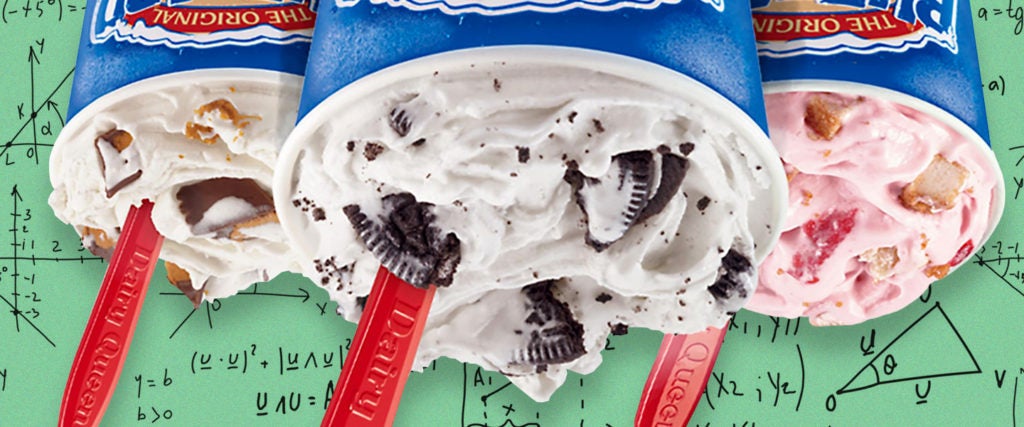I’d risk it all for an M&M McFlurry. I didn’t grow up in a region with any Dairy Queens, but I imagine those devoted to the chain feel similarly about the Blizzard, a concoction so impossibly thick and cold and chunky that you could hold the whole thing upside-down and not even gravity could make it budge.
Where I live in L.A., the nearest McDonald’s is a 10-minute walk away, while the closest Dairy Queen is a 27-minute drive up into Burbank. I’m too lazy to do either. I’m not, however, too lazy to go next door to the grocery store, purchase the necessary ingredients, pull out my blender and attempt to recreate a physics-defying frozen treat on my own. But in order to do so, I must first understand the science behind the Blizzard.
As such, I reached out to Maya Warren, the lead ice cream scientist for Cold Stone Creamery. Warren is quick to point out that while Dairy Queen might be best known for their upside-down Blizzard service, they weren’t the first: That honor actually goes to Ted Drewes, an ice cream shop in Warren’s hometown of St. Louis, that’s been serving custards upside-down since around 1960. “The trick is to make it as thick as possible so that it’s not able to move in the cup,” Warren explains. “It’s sometimes so thick, you definitely have to use some arm muscle to get the spoon out.”
“The key to serving the Blizzard upside-down is the same — make it as thick as possible,” she continues. “The ‘Blizzard Machine’ uses a quick rotating spindle to mix all the inclusions into the ice cream product. But not only does it mix everything together, it also repeatedly pushes the ice cream product to the side of the cup, forcing it to stick.” However, it’s important that the act of turning it upside-down is performed essentially as soon as it’s made, “otherwise if it gets too ‘meaty,’ it can drip all over and can slip out,” Warren explains.
A little further research tells me that DQ’s soft-serve “ice cream” (it’s technically categorized as “ice milk,” because it has only half the butterfat content required by the FDA in order to be labeled as ice cream) is served at approximately 27 degrees. Unfortunately, the average home freezer is usually around 0 degrees, while a refrigerator sits around 40 degrees.
In order to achieve the proper temperature, then, I’ve had to do some finagling. About an hour before my attempt, I moved the vanilla ice cream (true hard ice cream, since soft-serve “ice milk” isn’t available in the grocery store) from the freezer to the fridge. I don’t own a food thermometer, but here’s hoping it landed itself at 27 degrees and stayed that way.

I crunched up about five Oreos and half a tube of M&M minis. I don’t think this exact combination actually exists at either Dairy Queen or McDonald’s, but today I’m playing God. Inside a metal cocktail shaker, I layered the ingredients with two or so heaping spoonfuls of my perfectly warmed ice cream. I used the metal cocktail shaker because it reminded me of the containers a diner might make a milkshake in, but it probably wasn’t the best option — considering the head of my immersion blender is also metal, I could have caused some damage.

The bigger issue, though, is that my immersion blender is juuuust wide enough so as to miss the very bottom of the shaker. But with the exception of this flaw, it worked. It goddamn worked! It blended up into a solid smooth bed of crumbled Oreos and M&M-dyed vanilla swirls. And when I held that shit upside-down? It freaking held!
It only took about four seconds before a few little melted droplets fell out as I held it upside-down, but I still consider this a win. I think had everything been a tiny bit colder, it may not have dripped at all.
Obviously, I’ve just made a huge mistake in knowing I can produce such a concoction at home whenever I please, but perhaps now I will no longer be lured by the siren song of a McDonald’s McFlurry.
And Dairy Queen?
You aren’t so special. I can do what you do. I really, truly shouldn’t, but I can.

